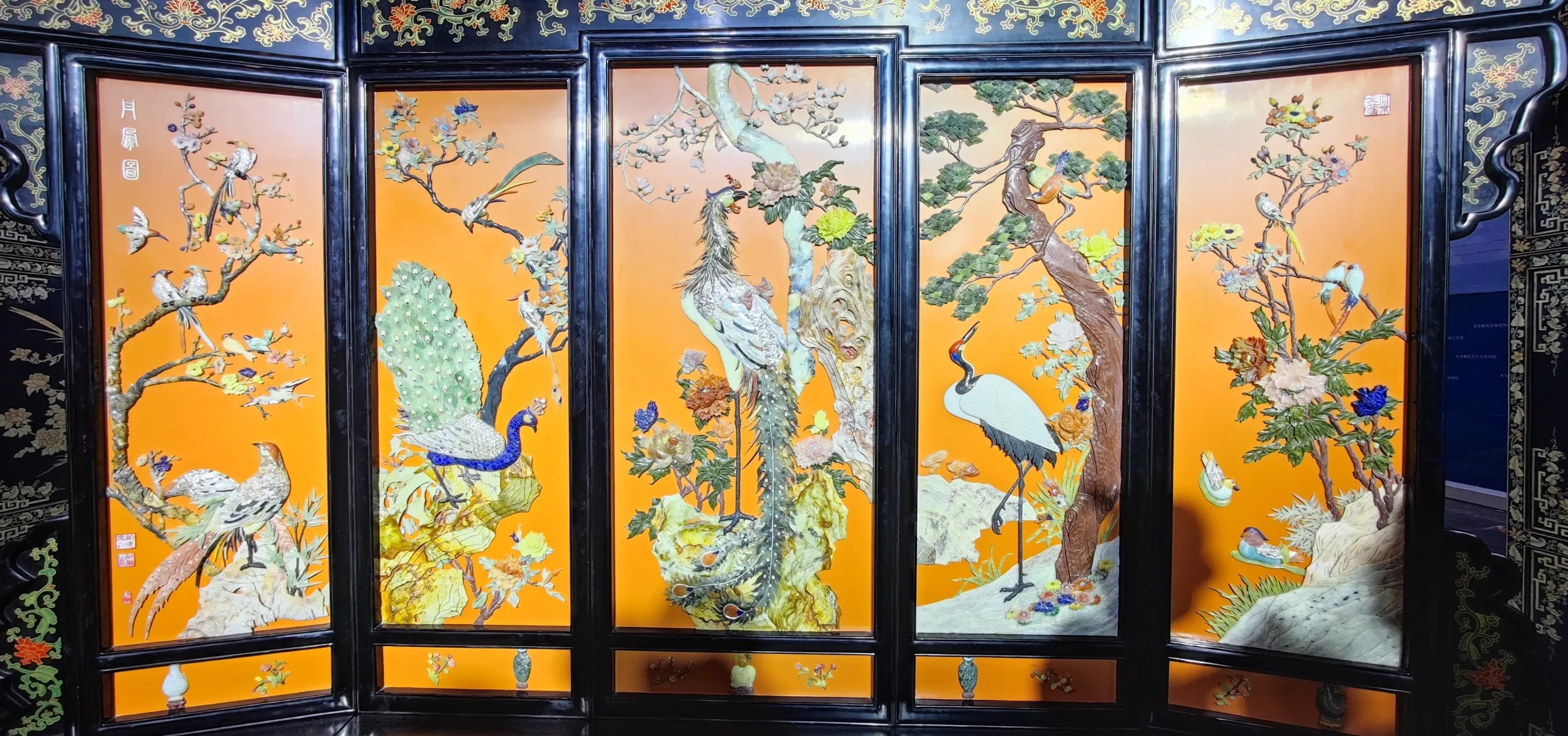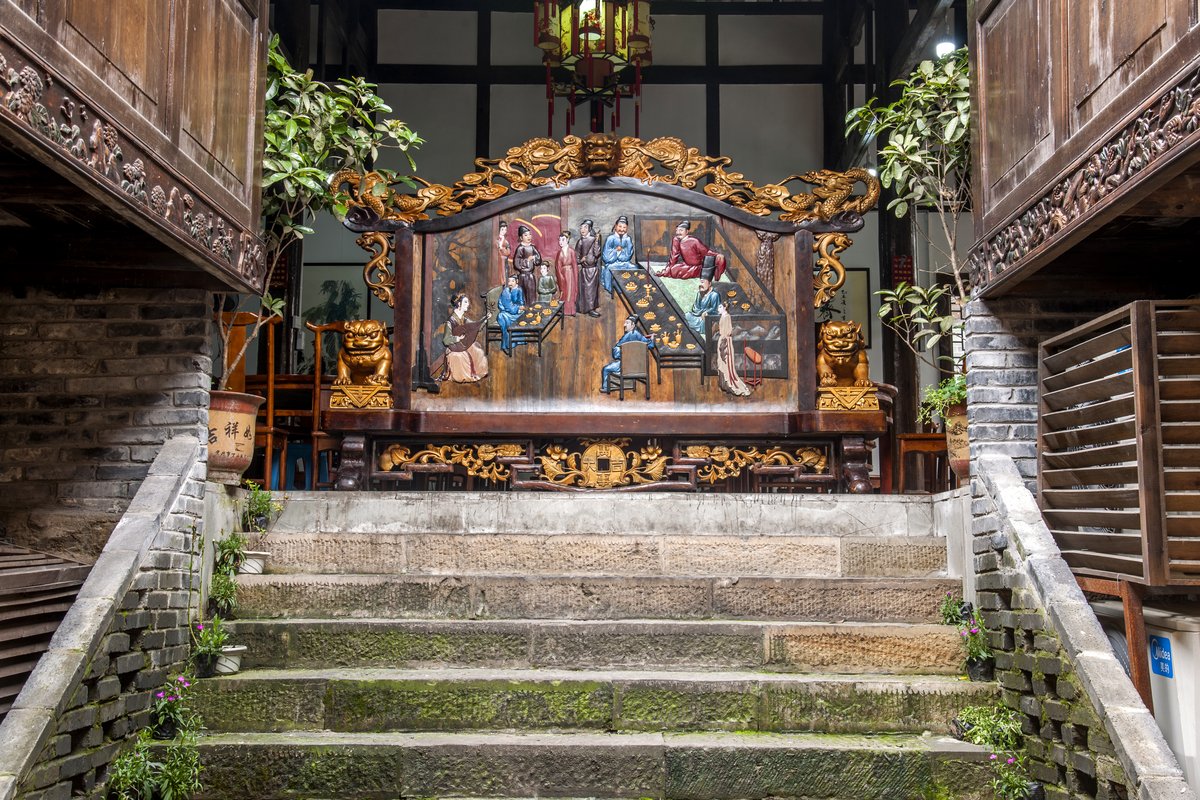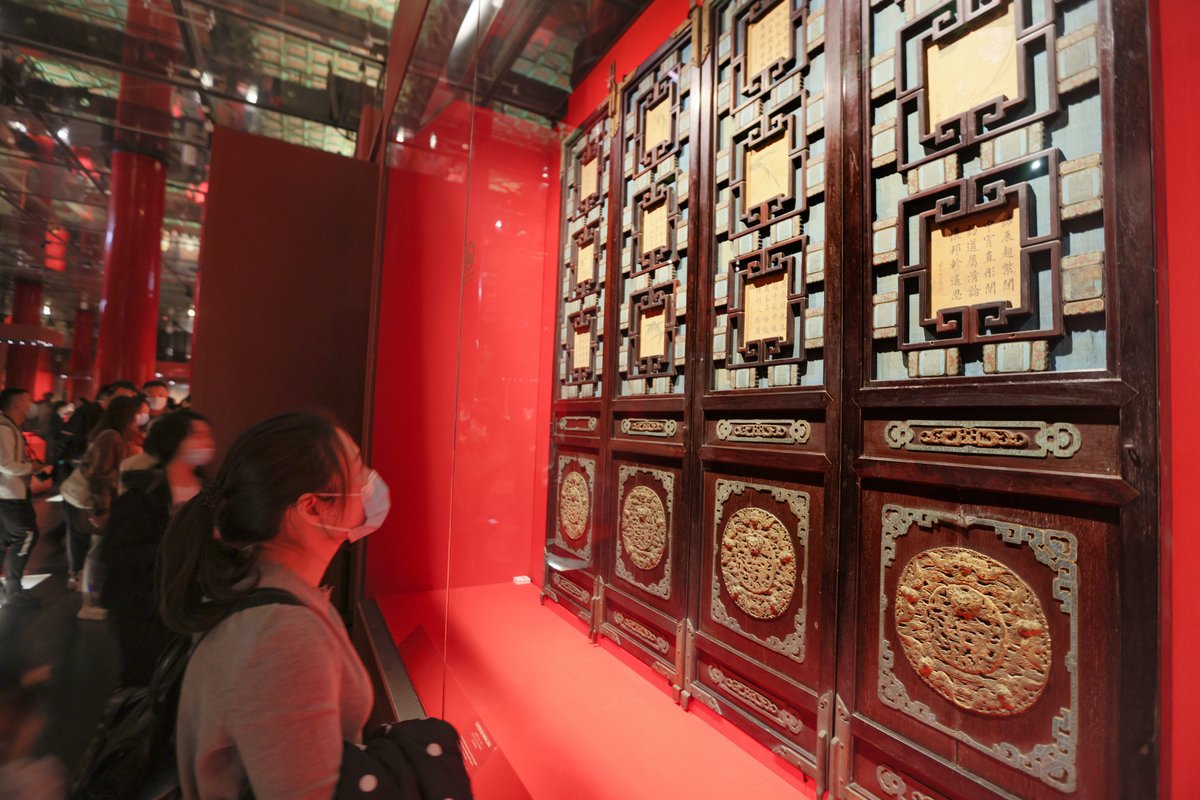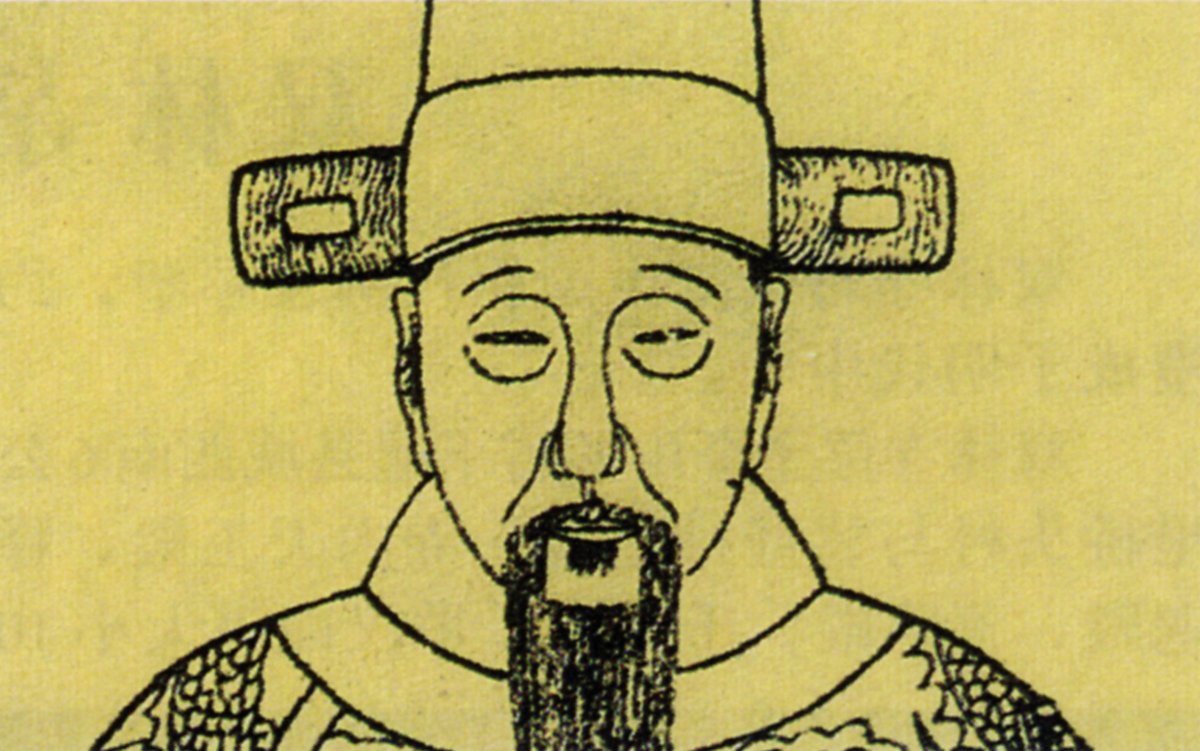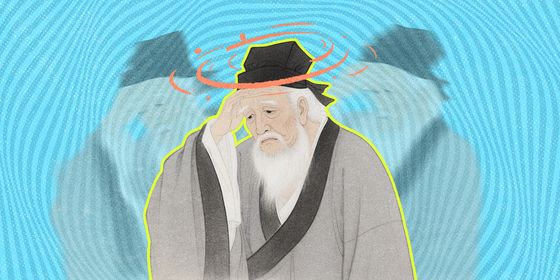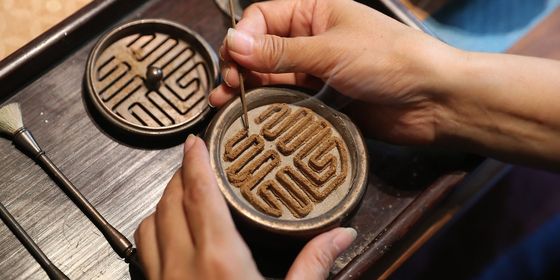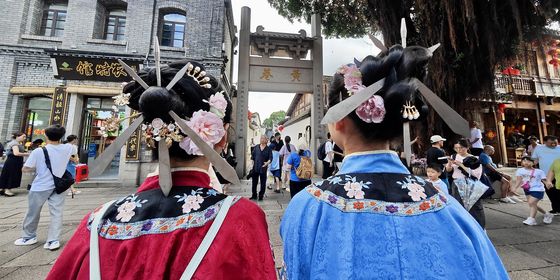How the humble “pingfeng” screen came to adorn everything from cave dwellings to the emperor’s throne
In 1922, British writer Somerset Maugham published his best selling book On a Chinese Screen, documenting his 1,500-mile trip along the Yangtze river two years prior. The curious title, though, referenced not the stunning vistas he saw on his epic journey, but a piece of traditional Chinese furniture, known in Chinese as 屏风 (píngfēng). This was at a time when the chinoiserie aesthetic (which first boomed in the 18th century) was seeing a revival in Europe, and screens were popular again.
But while Europeans in the early-20th century desired these screens for decoration, they had in fact played an important role in ancient Chinese people’s political, cultural, and daily lives.
Originally, 屏风 were vertical objects that could offer protection from the wind—the name could, literally, translate to ”windshield.” Later, pingfeng were also often used to divide a room, offer privacy (or opportunities to eavesdrop), or even show off the owner’s power and wealth with their elaborate designs.
It’s widely believed that the prototype of the screen was called 坫 (diàn), a simple piece of furniture made of wood and grass that northern Chinese, who lived in partially underground dwellings, put in front of doorways to keep out the cold. But by the Zhou dynasty (1046 – 256 BCE), they began to take on symbolic meanings. The Book of Rites (《礼记》) records that “The emperor stands in front of the screen (天子当依而立),” with 依 (yī) short for 斧依 (fǔ yī), the wooden screen fixed on the back of the emperor’s seat at the court.
At that time, screens were closely associated with imperial power. According to Rites of the Zhou Dynasty (《周礼》), only the emperor could place a screen facing the front door. Confucius supposedly once criticized Guan Zhong (管仲), a powerful politician of the Qi State, for violating the norms of etiquette,because Guan had once set a screen facing his door.
At that time, elite nobles also used screens in their homes to divide rooms into individual spaces for different classes of people. According to the Records of the Grand Historian (《史记》), by Sima Qian (司马迁) of the Han dynasty (206 BCE – 220 CE), when Lord Mengchang (孟尝君) met guests at home, he would have his servants sit behind his screen and write down their conversation. Because the servants were from a lower class, the customs of the time meant they could not be present with the nobility—sitting behind the screen was the only way they could stay in the nobleman’s living room.
By the Han dynasty, wealthy people also used screens to decorate their homes. Some of the screens had carved frames or painted panels. According to the Book of Han (《汉书》), Emperor Cheng of Han had a screen in his carriage with a painting showing the scene of Emperor Zhou of the Shang dynasty (1600 – 1046 BCE) getting drunk and amusing himself with his concubine Daji (妲己). On seeing the painting, official Ban Bo (班伯) advised the emperor not to overindulge himself in alcohol and women—though his warning didn’t appear to have any impact, as Emperor Cheng continued to be distracted by women and wine for most of his rule.
Screens feature in numerous well-known stories originating from the Han dynasty. According to the Book of Later Han (《后汉书》), scholar and calligrapher Cai Yong (蔡邕) was once invited by his neighbor to dinner. After the meal, a musician was called to play the guqin, a seven-string zither, for Cai behind a screen. But on hearing the music, Cai immediately got up to leave. The host was shocked, and asked what was the matter. Cai answered that he had sensed a murderous intent within the music. The host then went behind the screen to ask the musician whether it was true. The musician said: “When I was playing, I saw a mantis chasing after a cicada. I was afraid that the cicada would be eaten.” This story is still often told today as evidence of Cai’s musical ear.
Another story involved Emperor Guangwu, the first emperor of the Eastern Han dynasty (25 – 220). The emperor’s sister Princess Huyang was widowed at a young age, and she had eyes for the official Song Hong (宋弘), who was already married. In order to satisfy his sister, the emperor invited Song to have a conversation. He let the princess sit behind the screen, and said to Song: “As the saying goes, when a man attains a higher social position, he will change his friends; when a man becomes wealthy, he will change his wife. Isn’t this normal?” But Song replied: “I heard that a friend one made when poor shouldn’t be forgotten; and the wife one married when destitute shouldn’t be discarded (贫贱之交不可忘,糟糠之妻不下堂).” Hearing this, the emperor turned to the screen, telling the princess: “It won’t happen.” Song’s phrase is still in use today as a wise saying.
In the Tang dynasty (618 – 907), Emperor Taizong developed a new function for the screen—a notepad. In 639, official Wei Zheng (魏征) wrote a memorial to the throne, warning the emperor that he should not abandon his policy of advocating frugality. The memorial was so brilliant that the emperor couldn’t help writing it on the screen with his brush and ink, so that he could gaze upon it always.
This tradition lived on after Taizong. According to the Old Book of Tang (《旧唐书》), Emperor Xianzong ordered his craftsmen to make six special screens with the achievements of previous emperors and officials written upon them. Then, he made all the officials read it aloud together, as a way of boosting their morale.
Yet it was not always desirable to find oneself mentioned on the emperor’s screen. The History of Ming (《明史》) records one such story: In the reign of the Wanli Emperor, Zhang Juzheng (张居正), the chief minister of the cabinet, left a list of names to the emperor on his deathbed, praising them as great talents. The emperor copied all the names onto his screen immediately, promising that they would be recognized. However, Zhang had wielded such power and influence over the emperor’s rule that the emperor had begun to resent him. So, following Zhang’s death, all the people whose names were written on the screen were targeted, with some demoted and some removed from their positions.
During the Ming dynasty (1368 – 1644), typical screens were simple and artistic, while in the Manchu-led Qing dynasty (1616 – 1911), luxury screens became more common. During this period, it became popular to send expensive screens as gifts. The Records of the Reign of Emperor Qianlong (《 乾隆朝实录 》)notes that official Zheng Rui (徴瑞) once sent two screens to the emperor inset with countless pearls. The emperor was enraged, criticizing Zheng for wasting money on such frivolity. The two screens were returned, and the official, having previously invoked the wrath of the emperor with his incompetence, was ultimately accused of dereliction of duty.
In the Republican period, screens no longer enjoyed the popularity of previous eras. One reason may have been the popularization of glass. Windows no longer needed to be opened to let the sunshine in, thus there was no need for a screen to stop drafts. After the People’s Republic of China was founded, screens gradually disappeared from people’s daily lives. During the Cultural Revolution, they were even considered to be among the “Four Olds” (i.e. old ideas, old culture, old customs, and old habits), and became a target for destruction.
From the 1980s, after the reforms, these classical screens began to stage a comeback. But today, they are cherished more for their cultural and nostalgic value than any practical function.





